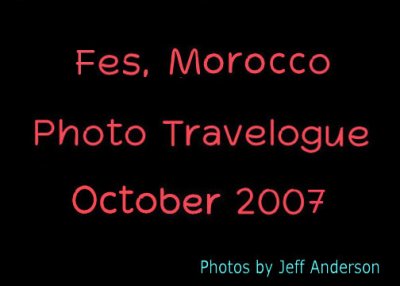
Fès, Morocco cover page. |
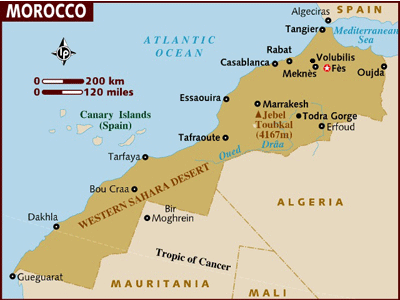
Map of Morocco with the star indicating Fès. |

The famous Boueloud Gate in Fès looks old but was completed in 1913. The blue mosaic tiles are the color of Fès. |
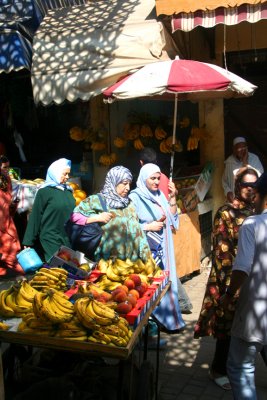
Muslim women walking by a fruit stand in the medina of Fès. |
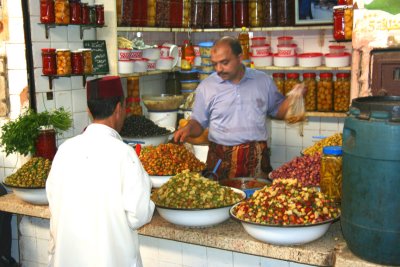
Olive vendor in a food market (souk) in Fès. |
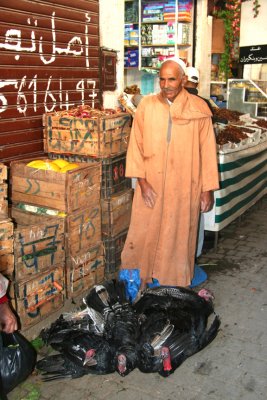
As I walked through the souk, I spotted this man who was selling live chickens. |

Old water clock made by Jewish people in the 13th century. The 12 windows represent the 12 hours of the clock. |
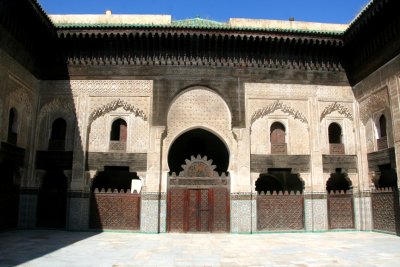
Interior of the Bou Inania Medrassa which was built in the 14th century by Abou Inan, the first ruler of the Merenid dynasty. |
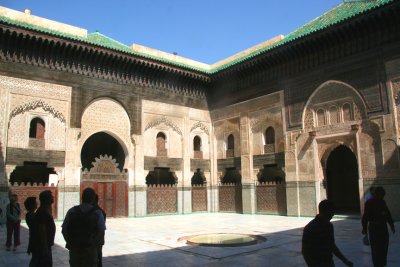
Students did their ablutions including washing their feet in this fountain at the medrassa. |
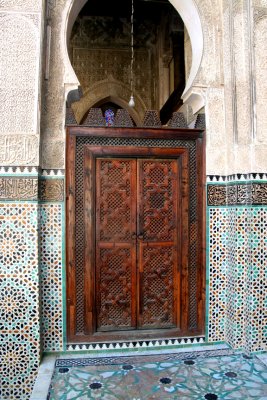
Beautifully carved wooden door and mosaics in the medrassa. |
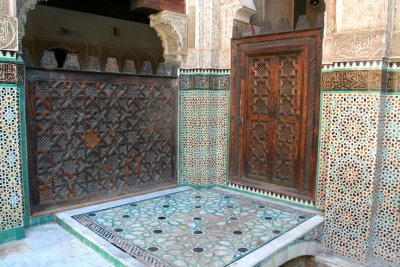
In the Muslim religion, it is forbidden for faces to be depicted in mosaics, only geometric designs are permitted. |
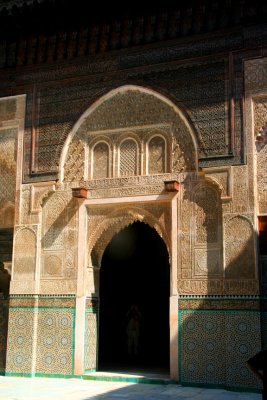
Door in the medrassa. The students attended from age 15 to 19. It closed in 1971. |

Mosque in the medrassa with stained glass windows. Students were required to pray 5 times a day. |
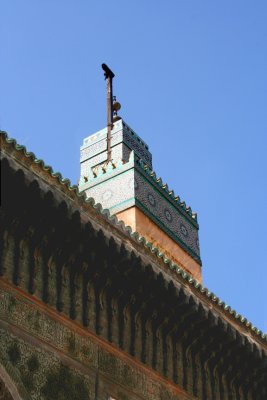
A minaret as seen from the medrassa. |

A 14th century ceiling design in the medrassa of the sun and moon. It is made of cedar. |
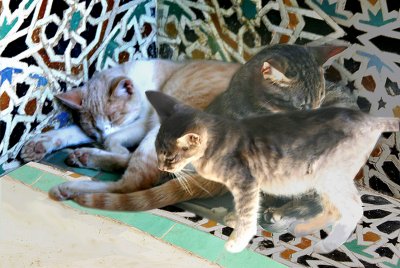
As I was leaving the medrassa, I noticed these 3 cats who had made themselves at home in a nook among some mosaic tiles. |

Minaret of a small mosque in the medina of Fès. |

This man was carving Muslim gravestones. |

Close-up of a gravestone. The Muslim holy day is Friday. |
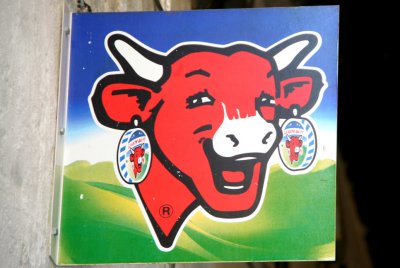
I enjoyed eating "La Vache qui Rit" (Laughing Cow) cheese, which is very popular in Morocco. |

A Muslim woman walking in front of an ancient door in the medina in Fès. |
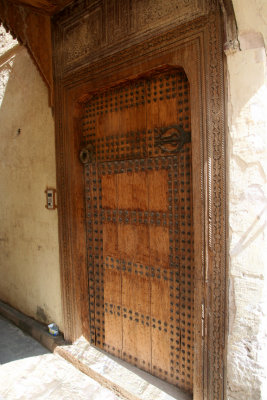
A 14th century door to a riad (a traditional Moroccan house with an interior garden). |
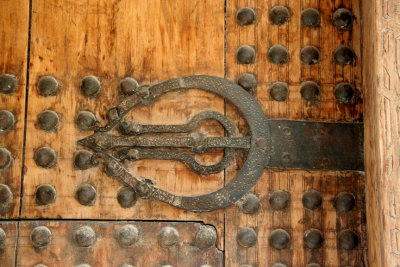
Design of the hand of Fatimah (Muhammed's daughter), which is supposed to bring good luck. |
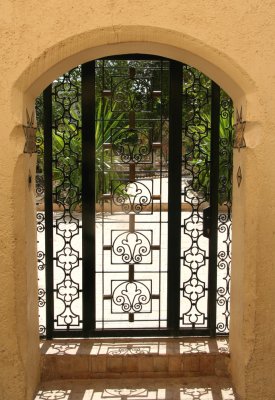
Iron door to the 5 star Riad Fès. |

Close-up of the door to the Riad Fès. |
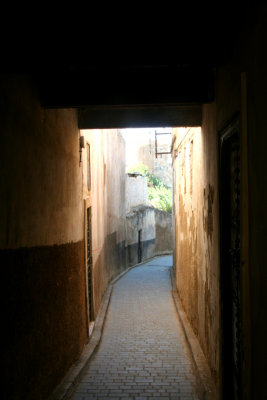
A narrow passageway in the medina in Fès. |

The passageway leads to these abandoned houses seen above. |
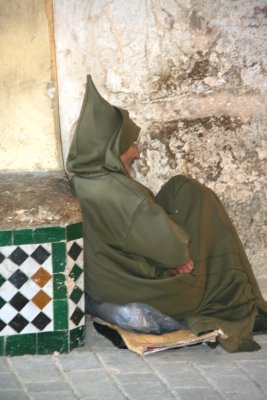
A homeless man in Fès. |

These mules are known as "medina taxis" in Morocco. |
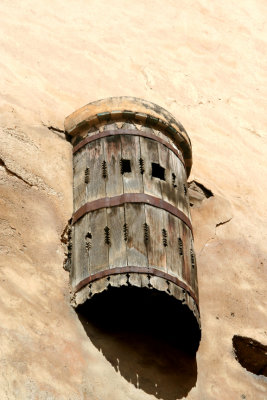
A 14th century window. Before a woman was married, she was not supposed to be seen. |
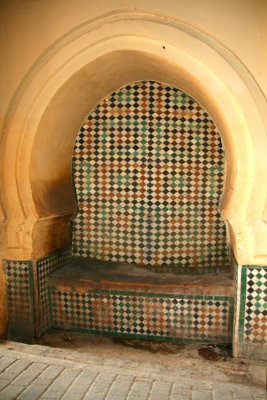
A 14th century public fountain. It is no longer working. |
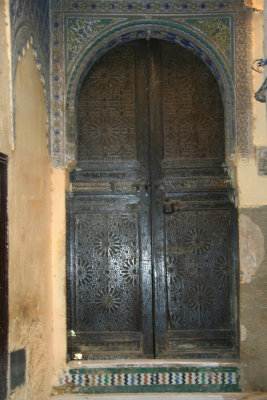
View of a Berber mosque door from the 11th century. |
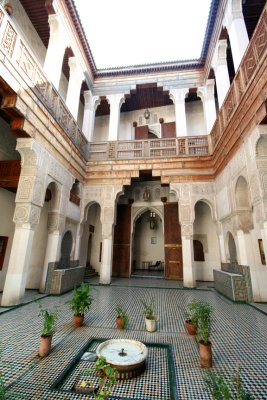
Interior of Dar Adiyel, a 14th century house named after the Adiyel family. It was restored in the 19th century. |
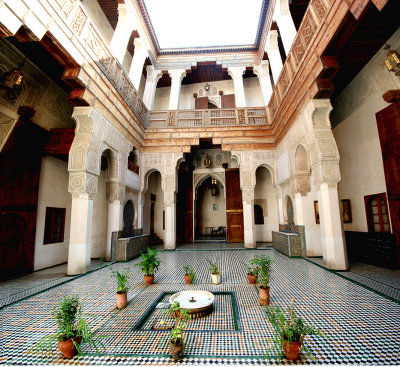
A composite (from 3 photos) of the courtyard of Dar Adiyel in Fès. In the summer, the family used the downstairs to stay cool. |

Man hauling cases of Coca Cola through the medina on the back of a horse. |
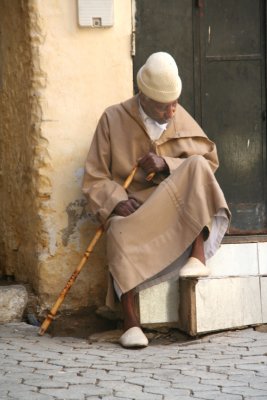
I passed by this old man who was resting in the medina. |
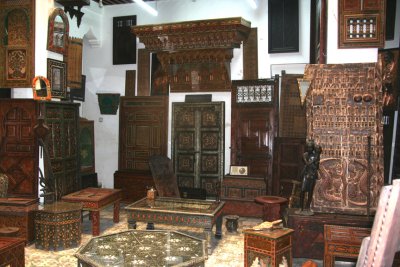
My tour guide took me to many shops including this furniture shop (probably hoping to get a commission). |

Sign for the Shouara Tannery, the largest of the 4 still-existing ancient tanneries in Fès, where leather products are made. |
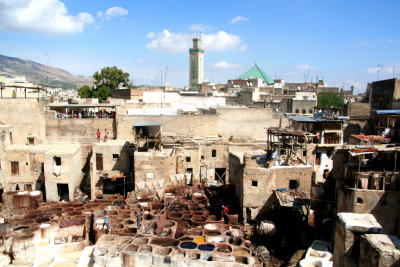
Cow, sheep, goat, and camel skins are treated in chemicals in dried-earth pits, and are pounded, scraped and dried. |

The skins are placed in a saline solution, lime, pigeon droppings, and then any of several natural dyes. |

Liquid dyes such as antimony for black, indigo for blue, poppies for red and saffron for yellow are used in the Fès tannery. |

When at the tannery, visitors are given a sprig of mint to offset the noxious odors that emanate from it. |

View of a tanner treating some of animal skins with lime. |
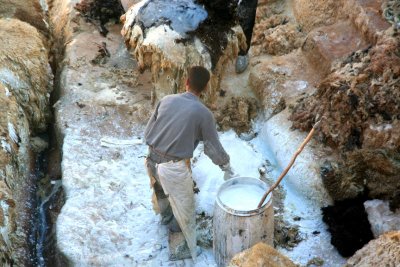
Close-up of a tanner. With the noxious ever-present odors, this has to be one of the most unpleasant jobs in the world! |

Barefoot workers in shorts pick up skins from the bottom of the dyeing vats with their feet, then work them manually. |

A tanner carrying animal skins. They need to be in good shape to do this kind of work (and, hopefully, have congested sinuses)! |
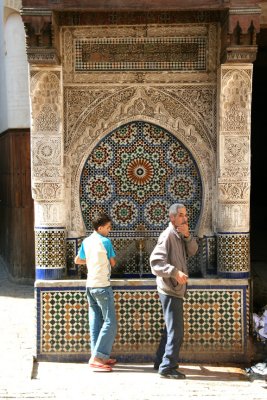
A public fountain in Fès built in the mid 19th century and is still in use today. |

This cat jumped up on the fountain to get a drink of water. |

Horses that were carrying large boxes in Nejjarine Square Fès. |
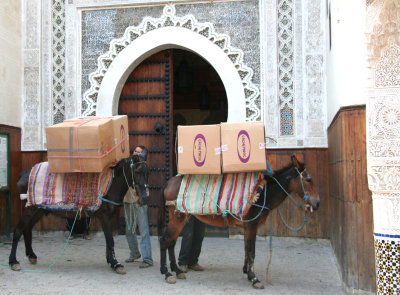
These doors are to the Nejjarine Museum of Wood Arts. |
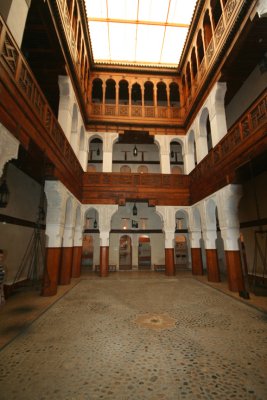
Interior of the courtyard of the Nejjarine Museum of Wood Arts. It is located in a former 16th caravanserai (roadside inn). |

A beautiful wood artifact on display at the Nejjarine Museum of Wood Arts. |
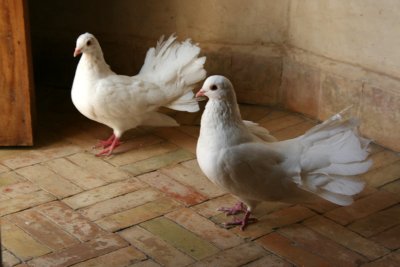
I climbed up to the roof of the Nejjarine Museum of Wood Arts and saw these two doves. |
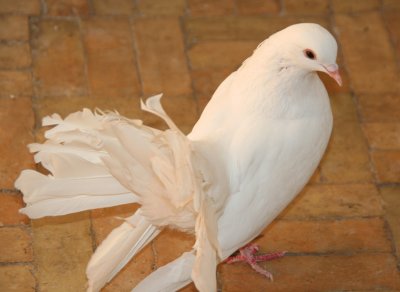
Close-up of one of the doves. |
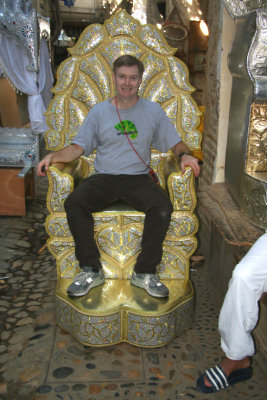
The tour guide took me to a factory that makes these (over-the-top) throne-like chairs. |

He also took me to a shop where this man was making decorative bronze plates. |
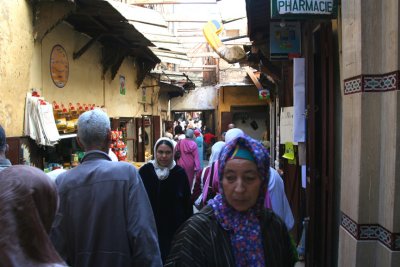
View of people as I walked through the medina. |
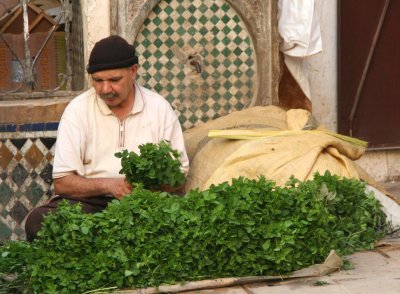
I saw this mint vendor at one of the souks in Fès. |

These two Moroccan men were having a pleasant afternoon taking a break in the medina in Fès. |
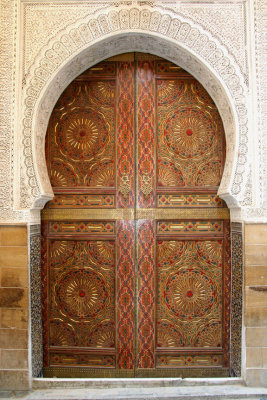
Another beautiful wooden door that I saw in Fès. |
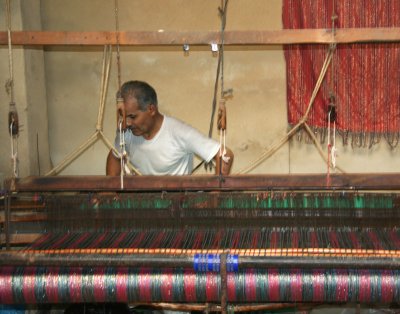
A weaving factory located in what was formerly a caravanserai (roadside inn). |

Tourists examining fabrics in the weaving factory in Fès. |
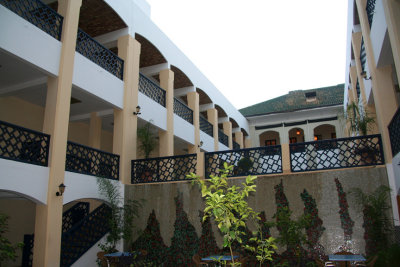
Interior of the 3 star Hotel Batha located in the heart of Fès close to the medina. |
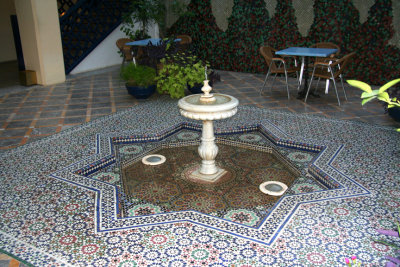
Fountain with beautiful mosaics inside the Hotel Batha. |
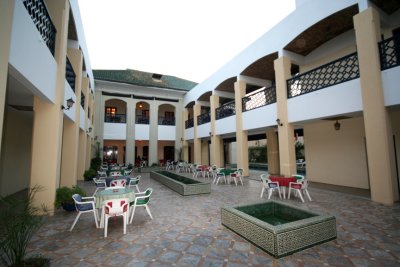
Picture taken with a wide-angle lens of the courtyard of the Hotel Batha. |
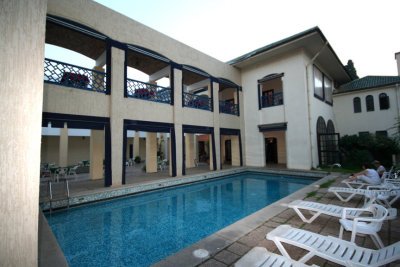
The Hotel Batha pool. |

A view at dusk of the exterior of the Hotel Batha. |
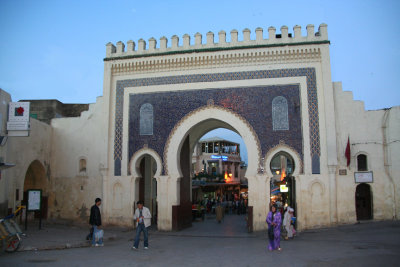
View of the Boueloud Gate at dusk. |
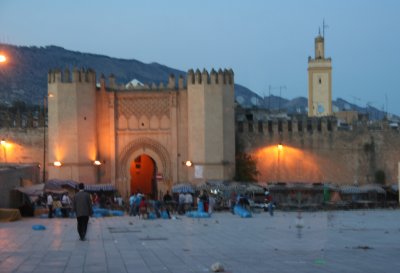
A dusk view of the main gate to the Kasbah (fortress) in Fès. |

A minaret in Fès seen at dusk. |











